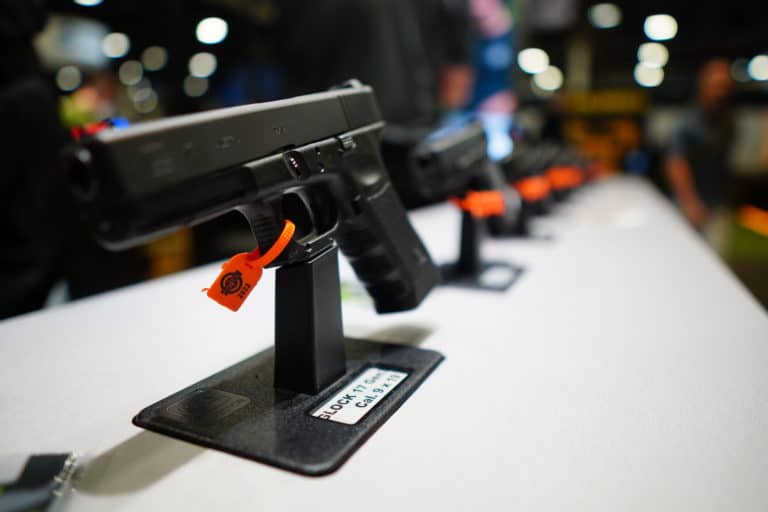A federal appeals court has upheld the ban on non-violent felons owning guns using some questionable reasoning, but don’t expect the Supreme Court to intervene.
The Third Circuit found the ban is consistent with the nation’s historical tradition of gun regulation in the United States, as required by the Supreme Court’s standard in New York State Pistol and Rifle Association v. Bruen. The Third Circuit took something of a scattershot approach to justifying its decision, relying on evidence with varying degrees of
In 1995, Bryan Range was convicted of defrauding the government out of $2,458 in food stamps. He never served a day in prison. However, his non-violent crime was punishable by up to five years in jail. So, under the Gun Control Act of 1968, he has been barred from buying or even possessing guns for life.
The Third Circuit said this permanent prohibition has several historical analogues. It started by citing 17th and 18th-century English bans on gun ownership by disfavored religious groups, especially Catholics. While those bans did survive to the early American republic, the Court argued they demonstrated that the tradition of disarming people based on their inclusion in a group perceived as dangerous, even if they haven’t committed any violent crimes, is deeply rooted.
It went on to cite a handful of bans on disfavored racial groups owning guns during the founding era as evidence this idea was popular in America as well.
“The earliest firearm legislation in colonial America prohibited Native Americans, Black people, and indentured servants from owning firearms,” the court’s per curiam opinion reads. “Likewise, Catholics in the American colonies (as in Britain) were subject to disarmament without demonstrating a proclivity for violence.”
The Third Circuit did not invent this line of thinking. Justice Amy Coney Barrett cited the concept in her Kanter dissent, although she came to the opposite conclusion about the constitutionality of gun bans for non-violent felons. But it would be rather disturbing if the legal underpinning for some of the nation’s most significant gun laws, which continue to be disproportionately enforced against minorities, were justified by explicitly bigoted historical laws.
Frankly, I doubt the Supreme Court would actually buy this analysis, given how thoroughly it has rejected racist gun laws from America’s past in its Second Amendment rulings thus far. Instead of viewing them as viable historical analogues for understanding the limits of Second Amendment protections, it has used them as examples of infringements on Americans’ gun rights that help illuminate the expansive nature of those protections.
In McDonald, the high court directly cited the tendency of ex-confederate states to pass laws banning freed slaves from owning guns.
“After the Civil War, many of the over 180,000 African Americans who served in the Union Army returned to the States of the old Confederacy, where systematic efforts were made to disarm them and other blacks,” the Court wrote. “The laws of some States formally prohibited African Americans from possessing firearms. For example, a Mississippi law provided that ‘no freedman, free negro or mulatto, not in the military service of the United States government, and not licensed so to do by the board of police of his or her county, shall keep or carry fire-arms of any kind, or any ammunition, dirk or bowie knife.'”
Instead of arguing the existence of those laws is evidence of the limits of the Second Amendment, the Court said the response to them is evidence of how expansive and valuable gun rights were to the Americans of the period.
“Union Army commanders took steps to secure the right of all citizens to keep and bear arms, but the 39th Congress concluded that legislative action was necessary,” the Court wrote. “Its efforts to safeguard the right to keep and bear arms demonstrate that the right was still recognized to be fundamental.”
The Third Circuit added a few other arguments for why the non-violent felon gun ban is historically justified. It identified three founding-era laws that disarmed loyalists, at least until they were willing to swear an oath of allegiance to the United States. It also explored history beyond laws that directly implicated firearm ownership. For instance, it argued the lifetime gun ban is even less strict than other punishments dolled out to convicted felons during the founding era, which often included death, even for those who committed non-violent felonies.
But whether or not the historical analysis employed by the Third Circuit is actually persuasive, the Supreme Court will probably be less-than-eager to intervene. The reason why is outlined in the argument the Third Circuit included above its attempt at applying the Bruen test. Even though it has nothing to do with whether the non-felon gun ban has a Founding-era equivalent, the opinion’s recitation of the high court’s own non-binding dicta makes the best case for why it probably won’t rush to reverse the lower court’s ruling.
“[N]either Bruen nor either of the Court’s earlier explanations of the individual right to keep and bear arms casts doubt on § 922(g)(1),” the Third Circuit wrote. “To the contrary, Justice Scalia’s majority opinion in Heller twice described ‘prohibitions on the possession of firearms by felons’ as both ‘longstanding’ and ‘presumptively lawful[.]’ Writing for the McDonald plurality, Justice Alito’ repeat[ed] those assurances.’ In Bruen, Justice Thomas’s majority opinion acknowledged that the right to keep and bear arms is ‘subject to certain reasonable, well-defined restrictions,’ and the concurrences by Justices Alito and Kavanaugh, the latter joined by the Chief Justice, echoed the Court’s assertions in Heller and McDonald.”
The Third Circuit uses the Supreme Court’s continual hedging and reassurances that they have no plans to uproot all gun laws as approval for the idea Second Amendment does not protect against the disarmament of certain groups of Americans. Namely: those who are not law-abiding.
“Thus, although the Supreme Court has not provided an ‘exhaustive historical analysis… of the full scope of the Second Amendment,’ Heller, McDonald, and Bruen provide a window into the Court’s view of the status-based disarmament of criminals: that this group falls outside ‘the people’—whether or not their crimes involved violence—and that § 922(g)(1) is well-rooted in the nation’s history and tradition of firearm regulation,” the Court wrote.
The Third Circuit seems to be making a pretty big logical leap there. While the Supreme Court has repeatedly added the “law-abiding” caveat into its description of who the Second Amendment protects, it has not expanded on exactly what that means. In fact, Justice Barrett is the only one who has written at length on this topic, and she came to the opposite conclusion of the Third Circuit.
Plus, the high court is likely to be outraged by the Third Circuit’s decision to treat Second Amendment protections as lesser than those of other amendments.
“Our reasoning applies solely to the Second Amendment and does not imply any limitation on the rights of individuals convicted of felony and felony-equivalent offenses under other provisions of the Constitution,” the Third Circuit wrote.
After all, the Supreme Court wrote at length in Bruen about how it disapproved of the lower courts treating the Second Amendment as a second-class right.
Still, the Supreme Court will probably be reluctant to take up this case anytime soon. There are many other gun law areas that six or more justices are likely to agree are more problematic than the felon gun ban. The Court has signaled it doesn’t think this is among the most egregious, and given that Second Amendment jurisprudence is still in its infancy, it will have many other issues to choose from in the coming months and years.






